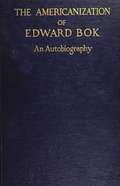- Table View
- List View
Column Layout Examples (large print)
by RnibThis diagram shows examples of three of the many column layouts that might be used in a print publication. There is a locator dot shown, which will be at the top left of the page when the image is the right way up. There are descriptive labels on the left of the page and layout examples on the right. In each example, the horizontal lines texture indicates areas of body text, and the fine dotted textured areas represent columns that might be used for headings, annotations, a table of contents, pull quotes, images, advertisements or even left empty to give the page an uncluttered look. Each example shows a single page.
Central Processing Unit (CPU) (UEB uncontracted)
by RnibThis flowchart diagram shows the features of a computer central processing unit with input, output and backing store. The CPU, shown by a textured rectangle, is in the centre of the page. Inside this are three unfilled rectangles representing, from the top to bottom, the control unit, the arithmetic and logic unit, and the immediate access store. Linked by arrows to the CPU are three rectangular boxes. Input is to the left, output to the right and backing store at the bottom of the page.
Central Processing Unit (CPU) (UEB contracted)
by RnibThis flowchart diagram shows the features of a computer central processing unit with input, output and backing store. The CPU, shown by a textured rectangle, is in the centre of the page. Inside this are three unfilled rectangles representing, from the top to bottom, the control unit, the arithmetic and logic unit, and the immediate access store. Linked by arrows to the CPU are three rectangular boxes. Input is to the left, output to the right and backing store at the bottom of the page.
Bridge Connection (tactile)
by RnibThis diagram shows a bridge connection between two rows of computers. The computers are textured shapes with "computer" labels; the lines coming from them are connecting cables.
Central Processing Unit (CPU) (large print)
by RnibThis flowchart diagram shows the features of a computer central processing unit with input, output and backing store. The CPU, shown by a textured rectangle, is in the centre of the page. Inside this are three unfilled rectangles representing, from the top to bottom, the control unit, the arithmetic and logic unit, and the immediate access store. Linked by arrows to the CPU are three rectangular boxes. Input is to the left, output to the right and backing store at the bottom of the page.
Carrier Sense Multiple Access (tactile)
by RnibThis diagram shows a carrier sense multiple access network.
Binary Tree (tactile)
by RnibThis diagram shows a binary tree with labels on the different components.
Base Register Addressing (tactile)
by RnibThis is a diagram showing base register addressing. There are two textured boxes on the right, the top labelled operand and the bottom labelled bass register. These are connected with to a circle in the centre of the page with a "+" label within. This circle is connected to a large textured box on the right labelled memory, this box is split into multiple sections, one of them labelled data.
Alarm system components (UEB uncontracted)
by RnibThis page shows images of five components used in a typical intruder alarm system. There is a locator dot shown, which will be at the top left of the page when the image is the right way up. At the top of the page there are three images. From left to right they are a PIR motion detector, a shock and inertia detector and a remote keypad (RKP). At the bottom right of the page are a panic button (PAB) on the left and a magnetic switch (MAG) on the right. PIR motion detector At the top of the image is a window for the sensor. At the bottom is an indicator light. Shock and inertia detector At the top of the image is the sensor and at the bottom an indicator light. Remote keypad (RKP) This is an image of the remote keypad, which is used to set the time and turn the system on and off. At the top of the image is a liquid crystal display and at the bottom are buttons to enter information into the numeric keypad. Panic button (PAB) This is an image of a panic button, which can be pressed to call for help in the event of an emergency. At the top of the image is a large easy-to-find button and at the bottom an indicator light. Magnetic switch sensor (MAG) On the left of the image is the magnetic switch, installed on windows and doors to sense when they are open. On the right of the image is the controller for the switch.
The Americanization of Edward Bok: The Autobiography of a Dutch boy Fifty Years After
by Edward BokEdward William Bok (born Eduard Willem Gerard Cesar Hidde Bok) (October 9, 1863 – January 9, 1930) was a Dutch-born American editor and Pulitzer Prize-winning author. He was editor of the Ladies' Home Journal for 30 years (1889-1919). <P><P> Pulitzer Prize Winner

